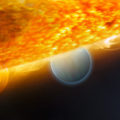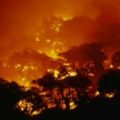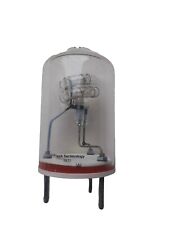
Arctic temperatures in the late 20th century, which were the warmest in four centuries, have been accompanied by a variety of other environmental changes, according to a review paper published in mid-July by a group of the world’s leading Arctic researchers.
The changes appear to be at least partly a result of human activity, said University of Colorado at Boulder Research Associate Mark Serreze, the paper’s principal author. Serreze and nine co-authors reviewed a series of more than 100 separate studies targeting a variety of components of Arctic change over decades and centuries.
“We had the pieces of the puzzle gathered, and we synthesized them to give us the best picture of what is going on right now in the Arctic,” said Serreze, a researcher at the CU-based National Snow and Ice Data Center, or NSIDC.
Funded by the National Science Foundation’s Office of Polar Programs and Division of Atmospheric Sciences, the new study looked at air temperature measurements, atmospheric circulation observations, precipitation data, snow cover and snow depth records. The study also included sea ice measurements, ocean structure data, permafrost temperature observations, glacier mass balances, plant growth observations and carbon flux measurements, said Serreze.
Other authors include John Walsh of the University of Illinois at Urbana-Champaign, Terry Chapin, Thomas Osterkamp and Vladimir Romanovsky of the University of Alaska, Fairbanks, Walter Oechel of San Diego State University and Jamie Morison of the University of Washington.
In some of the northernmost regions of the world, temperatures have warmed alarmingly in a very short period, according to climate data, said Serreze. Parts of Alaska and northern Eurasia, for example, have warmed by nearly 11 degrees Fahrenheit in the winter months over the past 30 years. “We have climate evidence from the past four centuries gleaned from ice cores, lake cores and tree rings that don’t show nearly as dramatic warming, putting the modern record into context,” he said.
Another issue troubling arctic scientists is the degradation of climate data from the Arctic region, including closures of some hydrometeorological stations and reductions of other climate networks in Canada and Russia, said Serreze. Russia, which had continuously maintained up to three drifting ice stations as part of the North Pole Drifting Program that took weather readings, atmospheric soundings, solar radiation and snow condition data since 1950, was terminated in 1991.
Canada also is cutting back on the amount of data gathered from its high-latitude climate stations by going to automated systems. “We may be able to take up some of the slack by recording similar data with satellites, but we are losing the value of long-term data continuity,” Serreze said.
“The compilation of research results presented in this paper make it undeniable that a major warming is affecting the Arctic environment,” said Michael T. Ledbetter, NSF’s Arctic System Science Program Director, Office of Polar Programs. “Whether or not the changes are due to global climate change, as many suspect, the Arctic is serving as an excellent testbed for observing and predicting environmental effects of global warming.”
Serreze currently serves on an NSF steering committee for a proposed program known as the Study of Environmental Arctic Change, or SEARCH, to try to better understand the nature and causes of recent change and to halt the data degradation. SEARCH would combine the work of NSF and other federal agencies like the National Oceanic and Atmospheric Administration, as well as university researchers, to focus additional effort on Arctic climate change.
“Our study validates climate-model results that predict the Arctic will be among the first regions on Earth to respond to a global warming trend,” said Serreze. “Given what we are seeing, continued monitoring of this region is crucial.”


















Comments are closed.